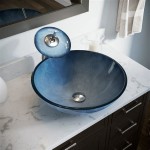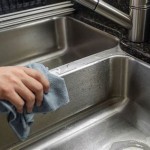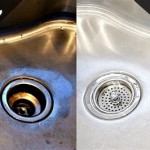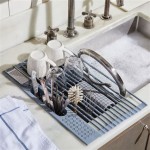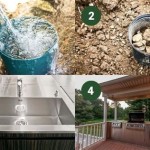Plumbing Wrench Considerations for Under-Sink Tasks
Plumbing repairs and maintenance under sinks often present unique challenges due to confined spaces and the variety of pipe connections. Selecting the appropriate wrench is paramount for efficient and damage-free work. This article explores the various types of plumbing wrenches suitable for under-sink applications, outlining their advantages, disadvantages, and optimal uses. Understanding these factors allows informed decision-making, contributing to successful plumbing projects.
The term "plumbing wrench" encompasses a broad range of tools, each designed for specific tasks. While some wrenches are general-purpose, others are specifically engineered for particular fittings or pipe materials. Under-sink plumbing typically involves chrome-plated pipes, plastic drain lines, and various compression fittings. Using the wrong wrench can lead to scratched finishes, deformed pipes, or stripped nuts, potentially exacerbating the problem.
Therefore, careful consideration must be given to the type of wrench selected. Leverage, accessibility, and the material being worked on are all crucial factors impacting the success of under-sink plumbing endeavors. The objective is to provide a comprehensive overview to aid in selecting the ideal wrench for the job at hand.
Adjustable Wrenches: Versatility and Limitations
Adjustable wrenches, also known as crescent wrenches, are characterized by their movable jaw, allowing them to fit a range of fastener sizes. This versatility makes them a common choice for many homeowners tackling basic plumbing tasks. They are readily available and relatively inexpensive, contributing to their widespread popularity. An adjustable wrench operates by turning a screw mechanism to adjust the jaw opening to the required size, gripping the fastener between the two jaws.
However, adjustable wrenches have limitations, particularly in the context of under-sink plumbing. The smooth jaws of an adjustable wrench can slip on rounded or corroded nuts, potentially damaging the fitting. This is especially problematic with softer metal fittings commonly found under sinks. The slipping action can also round off the corners of nuts, making them even more difficult to grip. Furthermore, the wider profile of an adjustable wrench can make it challenging to access fasteners in tight spaces, such as those frequently encountered under sinks.
Another drawback is the tendency for the adjustable jaw to loosen during use, requiring constant readjustment. This can be frustrating and time-consuming, particularly during complex plumbing repairs. While adjustable wrenches may suffice for some basic tasks, they are generally not the optimal choice for intricate or delicate under-sink plumbing work.
When using an adjustable wrench, it is crucial to ensure the jaws are tightly adjusted to the fastener to minimize slippage. Applying excessive force can further exacerbate the risk of damage. It is also important to use two wrenches whenever possible, one to hold the fitting steady and the other to loosen or tighten the nut. This prevents excessive strain on the pipes and reduces the likelihood of leaks.
Basin Wrenches: Designed for Tight Spaces
Basin wrenches, sometimes referred to as sink wrenches, are specifically designed for accessing fasteners in hard-to-reach locations, making them particularly well-suited for under-sink plumbing. They feature a long shaft with a pivoting jaw at the end, allowing access to nuts and bolts located deep within the cabinet or behind fixtures.
The pivoting jaw is typically serrated, providing a firm grip on the fastener. Some basin wrenches have a spring-loaded jaw that automatically adjusts to the size of the nut, further simplifying the task. The long shaft provides increased leverage, making it easier to loosen stubborn fasteners.
Basin wrenches are available in various lengths to accommodate different sink configurations and cabinet depths. Some models also feature telescoping shafts, allowing for even greater reach. The jaws of a basin wrench can typically rotate 180 degrees, providing flexibility in accessing fasteners from different angles.
While basin wrenches are highly effective for reaching difficult fasteners, they may not be suitable for all types of plumbing work. The serrated jaws can sometimes damage softer materials, such as plastic drain lines. It is also important to use the correct size basin wrench for the fastener being worked on, as using an undersized wrench can strip the nut.
Furthermore, basin wrenches can be challenging to use in very tight spaces, where the long shaft may not have enough room to maneuver. In such cases, other specialized wrenches may be required. Despite these limitations, basin wrenches remain a valuable tool for under-sink plumbing, offering unmatched access and leverage in confined areas.
Pipe Wrenches: For Heavy-Duty Applications
Pipe wrenches are characterized by their robust construction and serrated jaws, designed for gripping and turning pipes and fittings. They provide a strong grip, making them suitable for loosening corroded or tightly fastened pipes. Pipe wrenches are available in a variety of sizes, ranging from small models for domestic plumbing to large wrenches for industrial applications.
The serrated jaws of a pipe wrench are designed to bite into the pipe, providing a secure grip. This is particularly useful for working with steel or iron pipes, which can be difficult to grip with other types of wrenches. The large handle provides ample leverage, allowing for the application of significant force.
However, the aggressive nature of pipe wrenches makes them unsuitable for many under-sink applications. The serrated jaws can easily damage chrome-plated pipes or plastic drain lines, leading to unsightly scratches or even structural damage. Pipe wrenches are also typically too large and bulky for the confined spaces under sinks.
While pipe wrenches may be necessary for some heavy-duty plumbing repairs, they should generally be avoided for under-sink work. There are other wrenches specifically designed for these tasks that are less likely to cause damage. The primary use case for a pipe wrench under a sink would be for older galvanized plumbing systems where fittings are heavily corroded and require significant force to remove. Even in these situations, extreme caution is necessary to avoid damaging surrounding components.
When using a pipe wrench, it is important to ensure that the jaws are properly adjusted to the size of the pipe. Applying excessive force can crush the pipe or strip the threads. It is also recommended to use two wrenches whenever possible, one to hold the pipe steady and the other to turn the fitting. This helps to distribute the force and prevent excessive strain on the plumbing system.
Specialty Wrenches: Tailored Solutions for Specific Tasks
In addition to the general-purpose wrenches discussed above, several specialty wrenches are designed for specific under-sink plumbing tasks. These wrenches offer unique advantages in terms of access, leverage, and damage prevention. Examples include faucet wrenches, supply line wrenches, and adjustable pliers.
Faucet wrenches, also known as spud wrenches, are designed for installing and removing faucets. They feature a long, narrow head that can reach into tight spaces and grip the faucet mounting nuts. Some faucet wrenches also have a telescoping handle for added leverage. These wrenches often include multiple sized ends to fit various faucet nuts.
Supply line wrenches are specifically designed for loosening and tightening supply lines, which connect the water supply to the faucet. They typically have a narrow profile and a non-marring jaw to prevent damage to the supply lines. These wrenches often have angled heads for improved access in confined spaces.
Adjustable pliers, such as tongue-and-groove pliers (commonly known as Channel Locks), can also be useful for under-sink plumbing. They offer a wider range of adjustment than adjustable wrenches and provide a strong grip. However, it is important to use caution when using adjustable pliers on softer materials, as they can easily damage the finish or deform the pipe.
Another specialized tool is a strap wrench. This wrench uses a rubber or nylon strap to grip pipes, preventing damage to the surface. Strap wrenches are particularly useful for working with plastic pipes or chrome-plated pipes that are susceptible to scratches. However, they may not provide as much leverage as other types of wrenches.
The selection of the appropriate specialty wrench depends on the specific task at hand. By carefully considering the type of fitting, the available space, and the potential for damage, one can choose the optimal tool for the job. These specialized wrenches often make difficult tasks easier and reduce the risk of costly mistakes.
Ultimately, the best approach to under-sink plumbing is to have a variety of wrenches available. This allows one to select the most appropriate tool for each task, maximizing efficiency and minimizing the risk of damage. Investing in a good quality set of plumbing wrenches is a worthwhile investment for any homeowner who intends to perform their own plumbing repairs and maintenance.

Husky Basin Wrench 16pl0127

Husky Adjustable Plumbers Wrench 16pl0134

Milwaukee 48 22 7002 Basin Wrench 2 5 In Capacity

Honeeladyy Alloy Steel Basin Wrench Universal Under Sink Plumbers Carbon Faucet Four Claw Hexagon For Kitchen Bathroom

Husky Basin Wrench 16pl0127

Kitchen Repair Plumbing Tool Sink Faucet Key Pipe Four Basin Wrench Set 7 Sizes Universal Under Plumbers

Basin Wrench Plumbers Under Sink Tool Plumbing

Mnbfyx 2pcs Basin Wrench Sink Plumbing Universal Under Plumbers Multifunctional Faucet For Kitchen Bathroom

Ridgid 31175 Basin Wrench

Husky 2 In Universal Faucet Nut Wrench 410 073 0111 The Home
